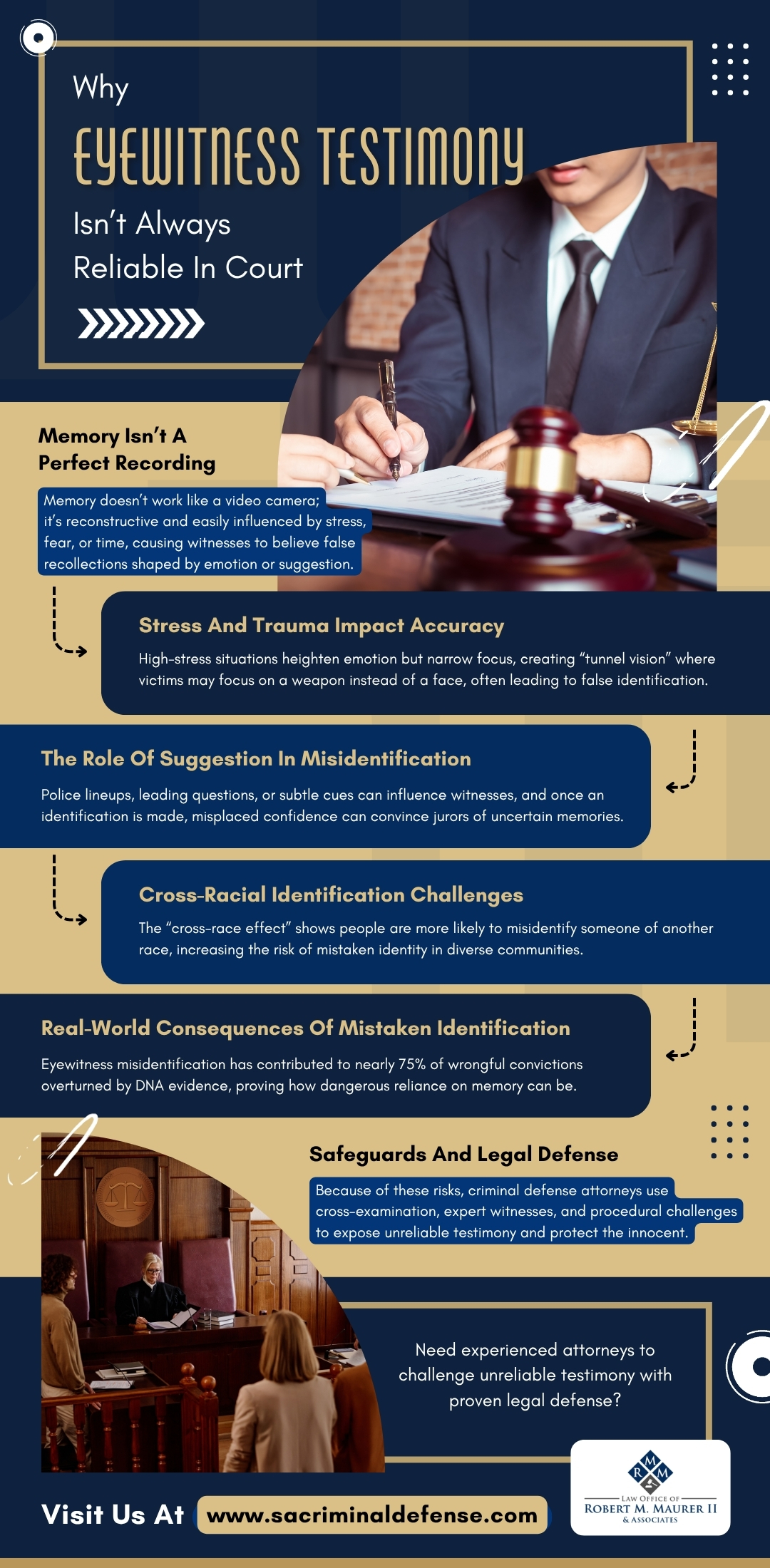In the courtroom, eyewitness testimony is often seen as powerful evidence. Jurors tend to trust what they hear directly from a witness, believing that someone who “saw it happen” must be telling the truth.
But research shows that eyewitness testimony is not always accurate. In fact, mistaken identification has been one of the leading causes of wrongful convictions in the United States.
Read on as criminal defense attorneys break down why eyewitness accounts can be unreliable, and how errors in identification affect real cases.

1. Memory Isn’t a Perfect Recording
Many people believe memory works like a video camera, capturing events exactly as they happened. In reality, memory is reconstructive. Stress, fear, or the passage of time can distort what someone remembers.
A witness may genuinely believe they saw the accused commit the crime, even though their recollection is influenced by emotion or suggestion.
2. Stress and Trauma Impact Accuracy
High-stress situations, such as violent crimes, create heightened emotions. While adrenaline sharpens some senses, it can also narrow focus. This “tunnel vision” means witnesses may miss key details or incorrectly identify suspects.
For example, a victim may focus on a weapon rather than the perpetrator’s face, leading to faulty identification.
3. The Role of Suggestion in Misidentification
Law enforcement procedures can unintentionally influence eyewitnesses. Lineup methods, leading questions, or even subtle cues may pressure a witness to choose the “best fit” rather than the actual culprit.
Once a witness makes an identification, their confidence often grows, even if their memory was uncertain at the start. This misplaced confidence can sway jurors and judges alike.

4. Cross-Racial Identification Challenges
Studies have shown that people are more likely to misidentify individuals of a different race. This phenomenon, known as the “cross-race effect,” significantly increases the risk of mistaken identity in diverse communities. Courts must take this into account when weighing the reliability of eyewitness testimony.
5. Real-World Consequences of Mistaken Identification
The Innocence Project reports that eyewitness misidentification has played a role in nearly 75% of wrongful convictions later overturned by DNA evidence. These statistics highlight just how dangerous it can be to rely too heavily on what someone claims to have seen. An innocent person can lose years or even decades of their life due to a mistake.
6. Safeguards and Legal Defense
Because of these risks, criminal defense attorneys often challenge eyewitness testimony. Cross-examination, expert witnesses on memory science, and highlighting flaws in police procedures are all strategies used to cast doubt on unreliable accounts. A strong legal defense ensures that one mistaken memory doesn’t cost someone their freedom.
If you or a loved one is facing charges where eyewitness testimony plays a role, don’t leave your future to chance. The Law Office of Robert M. Maurer II & Associates has the experience to challenge unreliable evidence and protect your rights.
For decades, we’ve built trusted connections throughout South Texas courtrooms, allowing us to guide clients with confidence and experience. Our office staff speaks Spanish to better serve our community, and we’re always here, day or night, with around-the-clock consultations.
Contact our criminal defense attorneys in San Antonio today.


